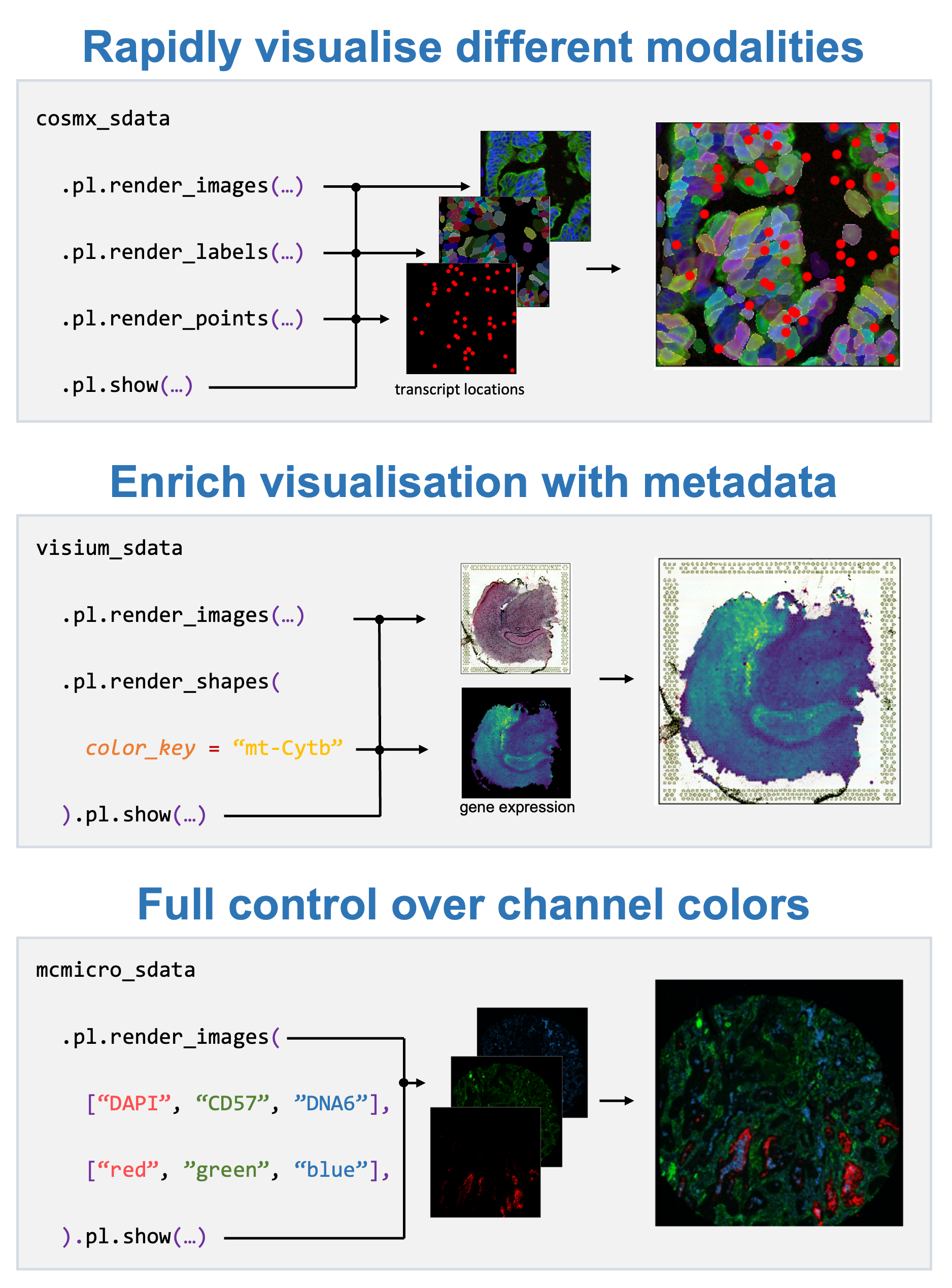The spatialdata-plot package extends spatialdata with a declarative plotting API that enables to quickly visualize spatialdata objects and their respective elements (i.e. images, labels, points and shapes).
SpatialData’s plotting capabilities allow to quickly visualise all contained modalities. The user can specify which elements should be rendered (images, labels, points, shapes) and specify certain parameters for each layer, such as for example the intent to color shapes by a gene’s expression profile or which color to use for which image channel. When the plot is then eventually displayed, all transformations, alignments and coordinate systems are internally processed to form the final visualisation. In concordance with the general SpatialData philosophy, all modalities of the major spatial technologies are supported out of the box.
For more information on the spatialdata-plot library, please refer to the documentation. In particular, the
- API documentation.
- Example notebooks (section "Visiualizations")
You need to have Python 3.10 or newer installed on your system. If you don't have Python installed, we recommend installing Mambaforge.
There are several alternative options to install spatialdata-plot:
- Install the latest development version:
pip install git+https://github.com/scverse/spatialdata-plot.git@mainFor questions and help requests, you can reach out in the scverse discourse. If you found a bug, please use the issue tracker.
Marconato, L., Palla, G., Yamauchi, K.A. et al. SpatialData: an open and universal data framework for spatial omics. Nat Methods (2024). https://doi.org/10.1038/s41592-024-02212-x



